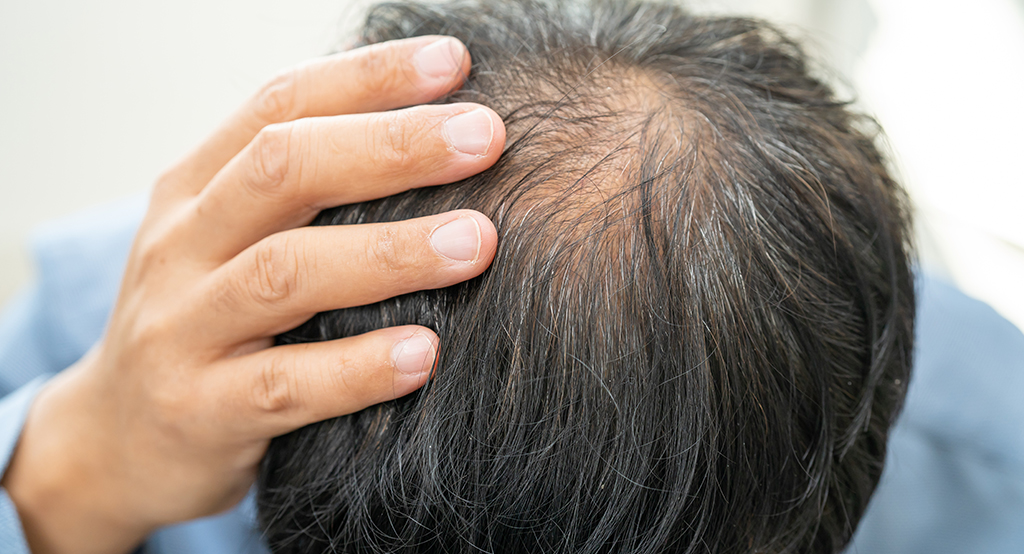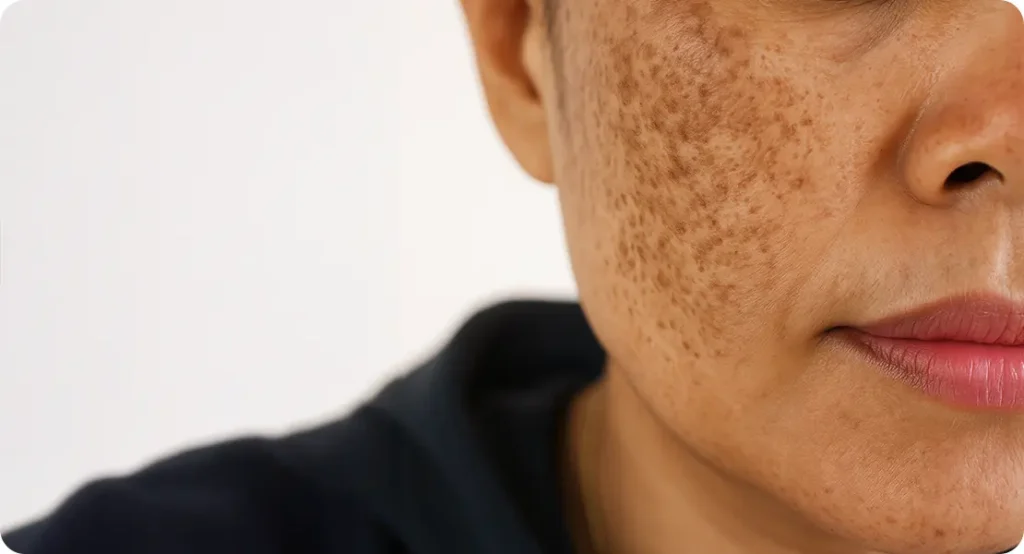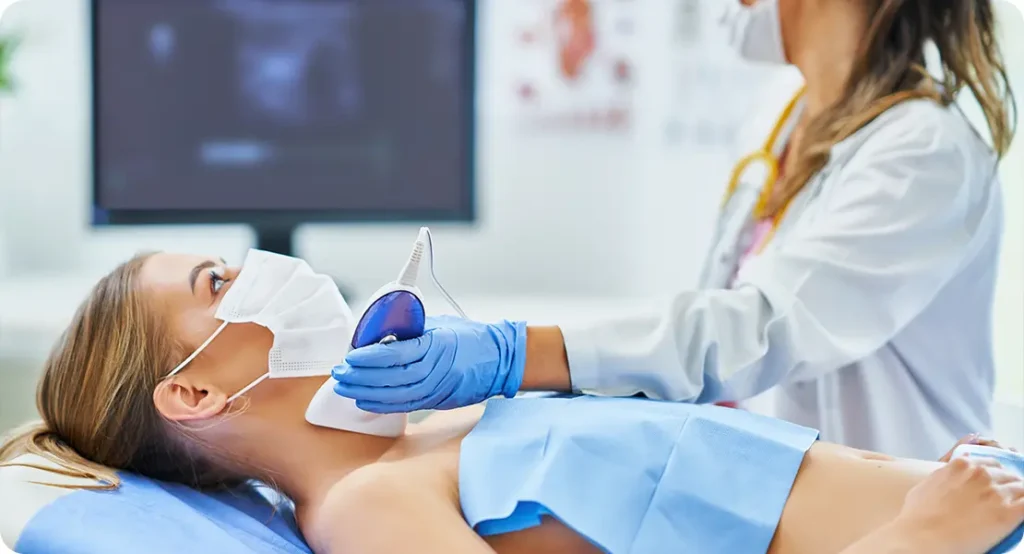Hormones run the show in ways we often don’t realise—especially when it comes to your skin. If you’ve ever noticed your complexion change during puberty, pregnancy, or menopause, you’ve already seen the effects of hormonal shifts in action. But now, research is showing just how deep that connection really goes. So let’s break it all down—from acne to hair loss and pigmentation—and explore what the science is uncovering about hormones and your skin health.
Hormonal Shifts Through Life: The Big Picture
Your hormones don’t stay the same across your lifespan—and neither does your skin. From your teens through to your 60s and beyond, your endocrine system is constantly adjusting, and these changes show up externally just as much as internally. That’s why dermatologists are paying closer attention to how hormone fluctuations contribute to skin conditions at every life stage.
In your teens and early twenties, hormones like testosterone and oestrogen surge, often leading to oily skin and breakouts. Fast forward a couple of decades, and it’s a different story. Perimenopause and menopause bring a drop in oestrogen that affects your skin’s moisture, elasticity, and pigment. For men, gradual declines in testosterone also have dermatological consequences—just in different ways. So, no matter your age or sex, your hormones are influencing your skin more than you might think.
New research is helping us understand these patterns in greater detail. Studies are no longer just looking at the obvious players like oestrogen and testosterone. Now, attention is also on insulin, cortisol, and thyroid hormones—and how imbalances in these systems can trigger or worsen skin issues. Whether it’s acne, hair thinning, or unwanted pigmentation, hormones are a key part of the puzzle.
What’s especially exciting is that this knowledge is driving more tailored treatments. Dermatologists and endocrinologists are increasingly working together to tackle skin concerns from the inside out. Instead of just treating the surface, clinicians are asking: “What’s going on hormonally that’s fuelling this?” That shift is changing how we approach common skin problems and leading to more lasting results.
Acne and Hormones: Why Breakouts Aren’t Just for Teenagers
We tend to associate acne with teenage years—but hormonal acne is a different beast. It can show up in your 20s, 30s, and even 40s, often taking the form of painful, cystic spots along the jawline and chin. And while skincare routines help, they often don’t get to the root cause: hormonal fluctuations.
What’s happening under the surface is this: hormones like androgens (especially testosterone) stimulate your sebaceous glands to produce more oil. That excess oil mixes with dead skin and bacteria, clogging your pores and triggering inflammation. In women, this hormonal sensitivity can be more pronounced during the menstrual cycle, pregnancy, or when coming off the contraceptive pill.
Recent studies have shown that elevated levels of DHEA-S (a precursor to testosterone) are strongly linked to adult female acne. And it’s not just about high levels—imbalances matter too. Even “normal” hormone levels can trigger acne if the balance between oestrogen and androgen is off. That’s why hormone testing and systemic treatments like spironolactone or combined oral contraceptives are becoming more common tools in dermatological care.
And it’s not just about sex hormones. Insulin resistance, often seen in PCOS (polycystic ovary syndrome), also contributes to hormonal acne by ramping up androgen production. That’s why dermatologists are now taking a more integrated approach, referring patients for blood tests, metabolic screenings, and endocrine reviews when acne doesn’t respond to conventional treatment.
Hair Loss and Hormones: A Thinning Connection
Hair loss is deeply tied to hormones, and that goes for both men and women. You’ve probably heard of male-pattern baldness, but female-pattern hair loss is also very real—and often overlooked. It’s slow, diffuse, and frustrating, and for many, hormonal shifts are to blame.
The primary culprit? Dihydrotestosterone (DHT), a potent form of testosterone. DHT binds to receptors in hair follicles, shortening their growth cycle and eventually causing them to shrink. Over time, the hair becomes finer, and regrowth slows or stops. This mechanism is behind androgenetic alopecia—the most common type of hair loss.

For women, the hormonal picture is more complex. Oestrogen helps keep hair in its growth phase, so a drop in oestrogen (as seen in menopause, postpartum periods, or stopping HRT) often leads to noticeable shedding. Thyroid issues—particularly hypothyroidism—are another major player. When your thyroid hormone is out of sync, it affects every cell in the body, including those responsible for growing hair.
Recent research is even pointing towards cortisol—the body’s main stress hormone—as a contributor to hair loss. Chronic stress can disrupt the normal cycle of hair growth, pushing more follicles into the shedding phase (telogen effluvium). This means emotional and psychological wellbeing play a bigger role in your hair health than we once thought.
So, how is this treated? Anti-androgens like finasteride and topical minoxidil are often used for DHT-driven hair loss. But increasingly, dermatologists are working with endocrinologists to identify hormonal imbalances, correcting them through medication or lifestyle changes to slow or even reverse hair thinning.
Pigmentation Disorders and Hormonal Triggers
When we talk about pigmentation, melanin is usually front and centre. But behind that pigment production is a web of hormonal signals that can disrupt skin tone and cause uneven patches—especially in women. One of the most prominent examples? Melasma.
Melasma is characterised by brown or grey-brown patches on the face, often appearing on the cheeks, upper lip, and forehead. It’s strongly associated with hormonal changes—particularly pregnancy (hence the term “the mask of pregnancy”), oral contraceptive use, and hormone replacement therapy. Oestrogen and progesterone can stimulate melanocytes, the pigment-producing cells in your skin, leading to overproduction of melanin.
Recent findings have shed light on the exact mechanisms. Studies suggest that melanocytes have receptors for oestrogen and progesterone, making them directly responsive to hormonal shifts. Even mild increases in hormone levels can tip the balance and trigger pigmentation changes, particularly in people with darker skin tones who already have more active melanocytes.
But it’s not just sex hormones—thyroid hormones have also been implicated in pigmentary disorders. Hypothyroidism, for instance, can lead to general dullness and uneven pigmentation, while hyperthyroidism may contribute to skin darkening. This means pigmentation changes can sometimes be an early sign of deeper hormonal dysfunction.

Treatment-wise, topical brighteners like hydroquinone, azelaic acid, and retinoids are still common. But now, many clinics are combining these with hormone evaluations, sun protection education, and sometimes even low-dose hormone therapy to address the root cause. In stubborn cases, laser treatments are used—but only after ensuring hormonal balance is addressed to prevent recurrence.
Polycystic Ovary Syndrome (PCOS): A Hormonal Skin Storm
If there’s one condition that clearly shows the skin-hormone connection, it’s PCOS. Affecting around 1 in 10 women, PCOS causes irregular ovulation and elevated androgens—and the skin consequences can be dramatic. We’re talking cystic acne, excess facial and body hair (hirsutism), scalp hair thinning, and dark patches of skin known as acanthosis nigricans.
At the core of PCOS is a hormonal feedback loop gone awry. Insulin resistance increases androgen levels, which then disrupt menstrual cycles and stimulate oil glands and hair follicles. This results in the telltale skin signs that often appear years before a formal diagnosis.
What’s interesting is that dermatologists are increasingly the first to suspect PCOS. When patients present with persistent acne and signs of hirsutism, a deeper hormonal investigation often uncovers the underlying syndrome. This kind of early detection is critical, not just for skin health but also for fertility, metabolic balance, and long-term health risks.
Management typically involves a multidisciplinary approach—topical treatments for acne, anti-androgens like spironolactone, dietary changes, and insulin-sensitising drugs like metformin. The goal isn’t just clearer skin—it’s overall hormonal harmony.
Menopause and Skin: The Slow Fade of Oestrogen
Menopause brings a host of skin changes that many don’t expect until they’re staring at a drier, duller reflection in the mirror. As oestrogen levels fall, skin loses collagen, moisture, and elasticity. Wrinkles deepen, and skin becomes thinner and more prone to bruising. But that’s not all—some women also develop new pigmentation issues or acne during this time.
Why? Oestrogen plays a huge role in maintaining skin structure and function. It stimulates collagen production, enhances water retention, and helps control melanin production. When this hormone drops, everything from firmness to tone starts to shift.
Emerging research is exploring topical oestrogen creams, phytoestrogens (plant-based compounds with oestrogen-like effects), and HRT for skin rejuvenation. While results vary, some women report noticeable improvements in hydration and skin thickness. However, these treatments aren’t suitable for everyone, and must be prescribed with caution due to other health risks.
Menopausal skin isn’t something to dread—it’s just another chapter. With the right support, from skincare to medical guidance, you can navigate the changes smoothly and confidently.
The Role of Thyroid Disorders in Skin Health
Your thyroid may be small, but when it’s out of balance, your skin knows. Both underactive (hypothyroidism) and overactive (hyperthyroidism) thyroids have clear dermatological signs, often serving as clues for early diagnosis.
In hypothyroidism, skin becomes dry, rough, pale, and cool. You might also notice puffiness, especially around the eyes, and a yellowish tone due to slowed vitamin A metabolism. Hair may become coarse and brittle, and nails may thicken and grow more slowly.

In contrast, hyperthyroidism can cause smooth, moist, flushed skin. It also speeds up hair shedding and may contribute to general skin fragility. Sometimes, in autoimmune thyroid disease (like Graves’), a condition called pretibial myxoedema can develop—resulting in waxy, swollen skin on the shins.
The connection between thyroid function and skin health is so strong that many dermatologists recommend thyroid testing for patients with unexplained hair loss or chronic dryness. Treating the thyroid imbalance often leads to noticeable skin improvements within weeks.
The Cortisol Conundrum: Stress, Skin, and Hormonal Fallout
Let’s talk about stress. We all know it’s not good for us, but what you might not realise is just how much it can mess with your skin—thanks to cortisol. This stress hormone affects everything from your skin barrier to inflammation levels and sebum production.
High cortisol levels weaken the skin’s protective barrier, making it more prone to irritation, dehydration, and infections. It also triggers inflammation, which can worsen conditions like eczema, psoriasis, and acne. And it stimulates oil glands, often leading to stress-related breakouts—especially around the forehead and jawline.
More recent research shows that chronic stress doesn’t just impact your skin directly—it also disrupts other hormonal systems, including insulin and sex hormones. That creates a cascade of imbalances, especially in women, leading to more flare-ups, pigmentation changes, and premature ageing.
Managing cortisol is now part of the conversation in many dermatology clinics. Mindfulness, CBT, adaptogenic herbs, and even low-dose antidepressants are sometimes considered as part of a broader strategy for patients whose skin issues clearly align with life stressors.
Looking Ahead: What the Research Is Telling Us
The link between hormones and skin is no longer just a theory—it’s a fast-growing field of research. From transcriptomics revealing how hormone receptors in skin cells behave, to clinical trials testing hormone-targeting treatments, we’re moving into a new era of integrated dermatology.
Recent trials are exploring the use of bioidentical hormones, hormone-blocking agents, and gene-based therapies to rebalance skin health from the inside. Even AI is entering the picture, helping to identify hormonal patterns in large datasets of patients with acne, hair loss, and pigmentation issues.
So, if you’re dealing with stubborn skin problems that won’t go away despite all your efforts, it might be time to look beneath the surface—literally. Your hormones could be trying to tell you something, and now more than ever, we have the tools to listen.
Final Thoughts: Treat the Root, Not Just the Surface
Skin problems can be frustrating, especially when you feel like you’ve tried everything. But what if the issue isn’t on your skin—it’s in your bloodstream? Hormonal imbalance is a hidden trigger for so many common dermatological concerns. The good news is, once you understand that connection, you can start treating the root cause—not just the symptoms.
Talk to your GP or dermatologist about whether hormone testing might be right for you. Whether you’re struggling with breakouts, thinning hair, or new pigmentation patches, there’s a growing toolbox of treatments that take your hormones into account. And that’s a real step forward in skin health that goes more than skin deep.
If you are concerned about hormonal imbalances and the conditions discussed in this article, you can contact us at The London Dermatology Centre to book a consultation with one of our expert private dermatologists.

References:
- Bienenfeld, A., Azarchi, S., Lo Sicco, K., Marchbein, S., Shapiro, J. and Nagler, A.R., 2017. Hormonal treatment of acne in women. Journal of the American Academy of Dermatology, 77(5), pp.967–973.
- Azziz, R., Carmina, E., Chen, Z., Dunaif, A., Laven, J.S., Legro, R.S. and Lizneva, D., 2016. Polycystic ovary syndrome. Nature Reviews Disease Primers, 2, Article 16057.
Available at: https://www.nature.com/articles/nrdp201657 - National Institute for Health and Care Excellence (NICE), 2020. Menopause: diagnosis and management.
Available at: https://www.nice.org.uk/guidance/ng23 - British Thyroid Foundation, 2023. Skin and hair changes with thyroid disorders.
- Zouboulis, C.C., 2004. Acne and sebaceous gland function. Clinics in Dermatology, 22(5), pp.360–366.
Available at: https://doi.org/10.1016/j.clindermatol.2004.01.011
